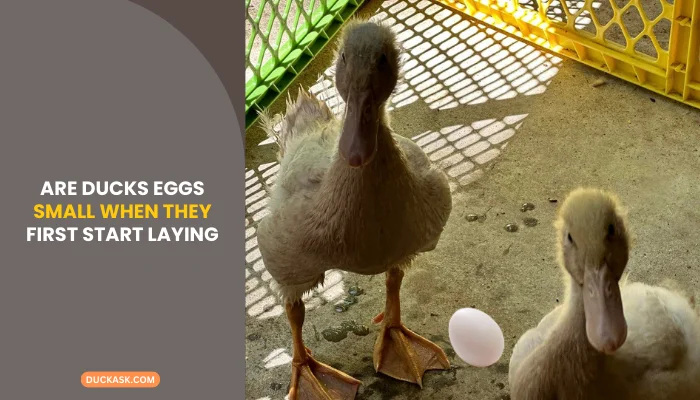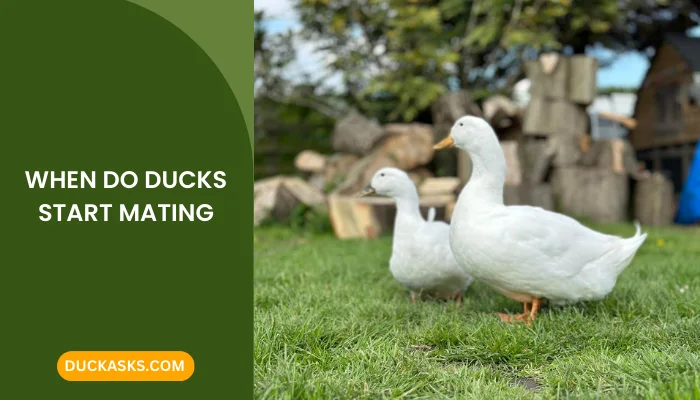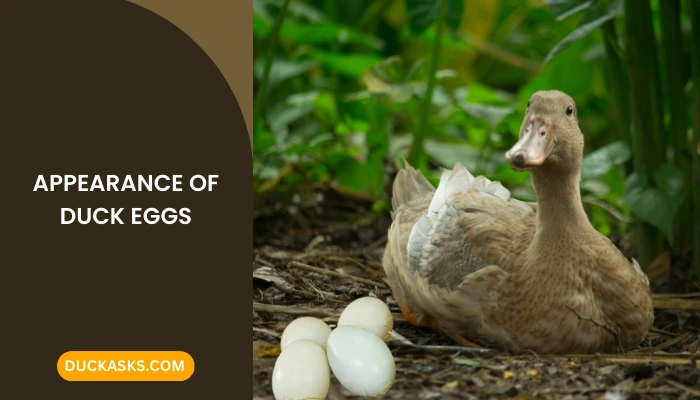What Does a Pregnant Duck Look Like?
Ducks are an avian species, and their reproductive processes are quite different from mammals. Instead of carrying live embryos, ducks and other birds carry eggs.
So, the right term here would be ‘Broody.’ A duck that is broody means it’s carrying or incubating eggs.
And what does a pregnant duck look like or behave like? A broody duck doesn’t look very different from one that’s not carrying eggs, except the feathers in the breast and lower abdomen are plucked. And a broody duck’s abdomen might be a little large.
Even though broodiness doesn’t bring much change in appearance, it does in behaviors. So, if you want to delve into all the visible signs of broody ducks, read through!
Want to learn more about duck breeding:
What Are the Typical Signs that a Duck Is Pregnant?
Like any other animal, ducks also show some symptoms when they get broody, and here are the most common ones:
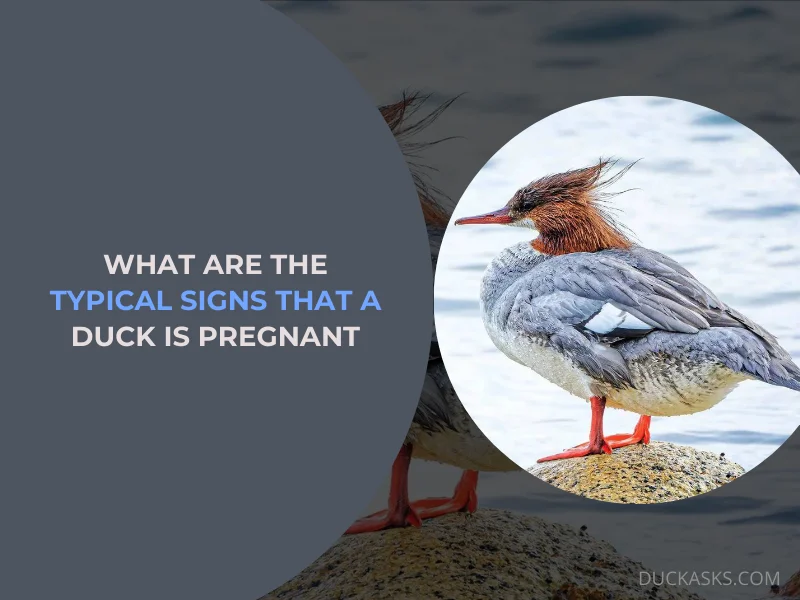
01. Increased Interest in Nesting
Suddenly increased interest in nesting is the most common sign observed in broody ducks. You’ll notice the duck will be inside the nest most of the time, they might come out for a while to eat, drink, release waste, and gather all the nesting materials.
They will carry feathers, stray leaves, and other soft materials using their mouth. And they would arrange all of them properly to create a comfortable and safe spot for their eggs.
02. Feather Plucking
Take a look at the duck’s breast and lower abdomen part broody ducks, after preparing the nest, pluck the feathers from those areas. They do it for two reasons. First, they want to soften the spot where they would lay eggs, so they fill that spot with feathers.
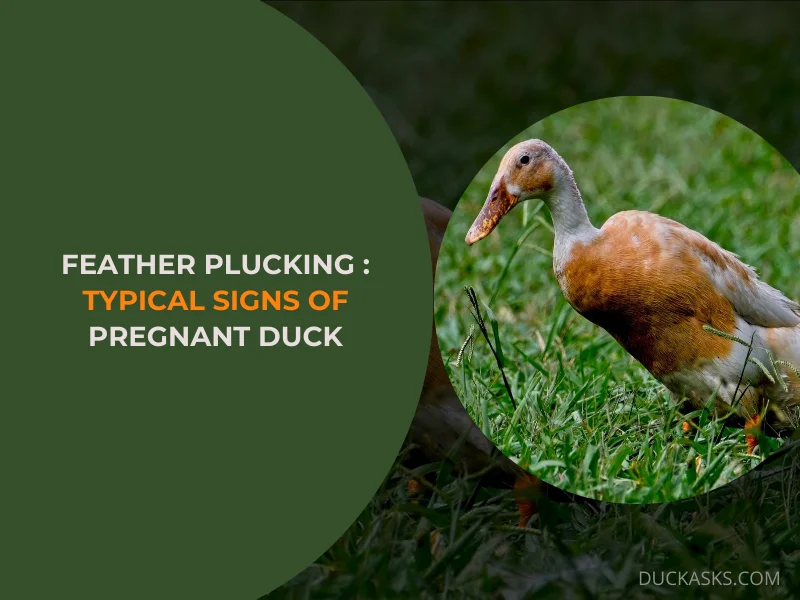
Secondly, removing feathers allows the duck to contact their skin to the egg, as a result, eggs get the needed heat for incubation.
03. Get Over Protective
When ducks get broody or lay eggs, one of the common behavioral changes that are often observed is over-protectiveness. Though they aren’t territorial, when they are about to lay eggs, they get extremely territorial.
Displays high aggression to chase away other ducks, animals, and even humans.
04. Puffed Posture
Broody ducks always sit on the nest puffing up their feathers, they do this to create an insulating layer of warmth so that eggs get the heat they require to incubate properly.
05. Softened Audio
At other times, you would see ducks making strong quack sounds, but when they get broody, their voice gets softened. They make very gentle sounds to communicate. And in some cases, ducks don’t make any sound at all.
06. Decreased Appetite
When ducks get ready to lay eggs, their appetite decreases. This mainly happens due to their concentration shift to egg incubation. Plus, they remain in the nest most of the time.
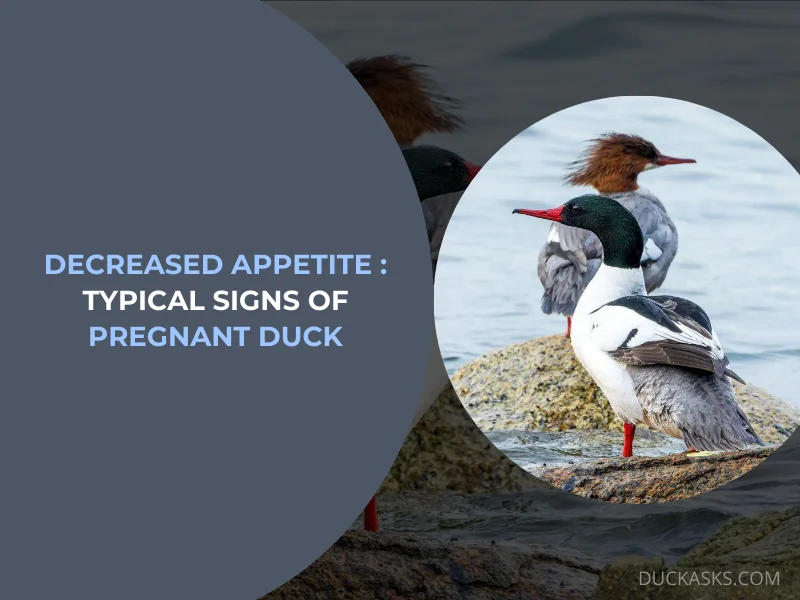
07. Enlarged Abdomen
Though it’s not easy to detect, ducks that carry eggs have slightly enlarged abdomens, this happens due to the egg’s presence in the oviduct. It happens to most birds.
Frequently Asked Questions
01. How long is a duck pregnant?
As mentioned earlier, ducks lay eggs, therefore, “broody” is the right term to use rather than “pregnant.” Moving on, how long a duck will hold an egg inside depends on various factors. But on average, from egg development to egg laying takes around 24 – 26 hours. The incubation period is around 28 – 35 days.
02. How often should a pregnant duck lay eggs?
The frequency of duck egg laying depends on a bunch of factors such as duck species, age, health, environment, food, and mating. However, to give you a rough number, during breeding seasons, ducks do lay one egg after every 1 or 2 days.
03. What time of year do ducks lay fertile eggs?
It depends on the species, geographical location, and local climate. In North America and Europe, ducks often lay fertile eggs during the spring and summer.
Conclusion
Broodiness among various duck species exhibits notable variations influenced by some factors such as environment, genetics, etc.
However, some common behaviors in many species are feather plucking, getting obsessed with nesting, and getting aggressive. Well, that’s it, it’s time to pack it up. Hope this guide answers your question, “What does a pregnant duck look like?”.
For more articles like this, make sure to get connected to us via Pinterest, X, and Facebook.
Reference:
- Yao, Y., Yang, Y. Z., Gu, T. T., Cao, Z. F., Zhao, W. M., Qin, H. R., Xu, Q., & Chen, G. H. (2019). Comparison of the broody behavior characteristics of different breeds of geese. Poultry Science, 98(11), 5226-5233. https://doi.org/10.3382/ps/pez366


